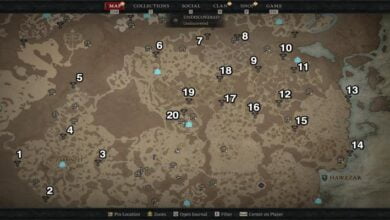Engaging and Disengaging: A Game to Help Fearful and Reactive Dogs
Many dogs find it difficult to remain calm and relaxed in the presence of other dogs, people, or external noises. Instead of simply moving on, they may display intense stress responses such as barking, lunging, avoiding, hiding, or even jumping and mouthing. Changing these behaviors requires a gradual process of counter-conditioning, desensitization, and training alternative responses.
The Engage-Disengage Game: A Gentle Approach
The Engage-Disengage Game utilizes positive reinforcement techniques to decrease a dog’s fear, anxiety, or frustration while teaching them a safe and appropriate replacement behavior called Self-Interruption. This game is designed to help fearful and reactive dogs cope better with their triggers.

How to Play the Game
Preparation:
- Gather 3 to 4 types of high-value treats for your dog.
- Ensure that your dog is already familiar with a verbal marker or a clicker as a marker for correct behavior.
- Use a humane and gentle collar or harness for your dog, avoiding choke chains, prong collars, or shock collars. A simple flat buckle or snap collar, a martingale collar, or a standard front-attach harness is recommended.
- Choose a leash of appropriate strength for your dog, preferably about 1 inch wide. A regular leash without any bungee or retractable features is preferred.
- Practice techniques such as fast U-turns and luring your dog away from distractions.
- Find a safe position that is a sufficient distance away from potential triggers. This distance is usually at least 20 feet, although some dogs may need more space.
The Game:
When playing the Engage-Disengage Game, it’s important to keep the sessions short and enjoyable for your dog. Play for about 5 minutes, then take a break and let your dog relax. Remember, it’s a game!
Level One
In this level, the goal is to reward your dog for engaging their attention with a trigger. Always start at a safe distance away from the trigger.
- Be quiet and still while waiting for your dog to notice the trigger. Allow your dog to explore the environment and follow along with them or remain quietly in one place.
- As soon as your dog looks at the trigger (engages), use your clicker or marker word to indicate the desired behavior.
- When your dog looks back at you, offer one of their super tasty treats! If your dog doesn’t look at you after you mark the behavior, it means you’re too close to the trigger. Back away and start again.
Continue this process for 3 to 5 successful repetitions with the same trigger at the same distance before moving to Level Two. A successful repetition is when your dog looks at you for the treat after you’ve marked their behavior of engaging with the trigger.
Level Two
In Level Two, you’ll reward your dog for disengaging from the trigger by looking back at you. Start at the same distance as Level One.
- Wait for your dog to engage with the trigger, then give them 3 to 5 seconds to naturally disengage or look away from the trigger. If your dog doesn’t look away within 5 seconds, return to Level One.
- As soon as your dog looks away from the trigger, use your clicker or marker word to indicate the desired behavior.
- Reward your dog with a tasty treat! If your dog doesn’t look at you for the treat or continues to react to the trigger, move further away and start again.
- Repeat this process for 3 to 5 successful repetitions. A successful repetition is when your dog comfortably disengages from the trigger on their own.
After completing these repetitions, you can gradually move 1 to 5 steps closer to the trigger. It’s recommended to take small increments and always observe your dog’s body language. Never rush to the next step. Refer to the “Beach Diagram” below for guidance on tracking your dog’s emotional state and knowing when to move forward or step back.
Remember, patience and consistency are key in helping your fearful and reactive dog overcome their challenges. The Engage-Disengage Game, with its focus on positive reinforcement and gradual desensitization, can be a powerful tool in improving your dog’s behavior and overall well-being.


